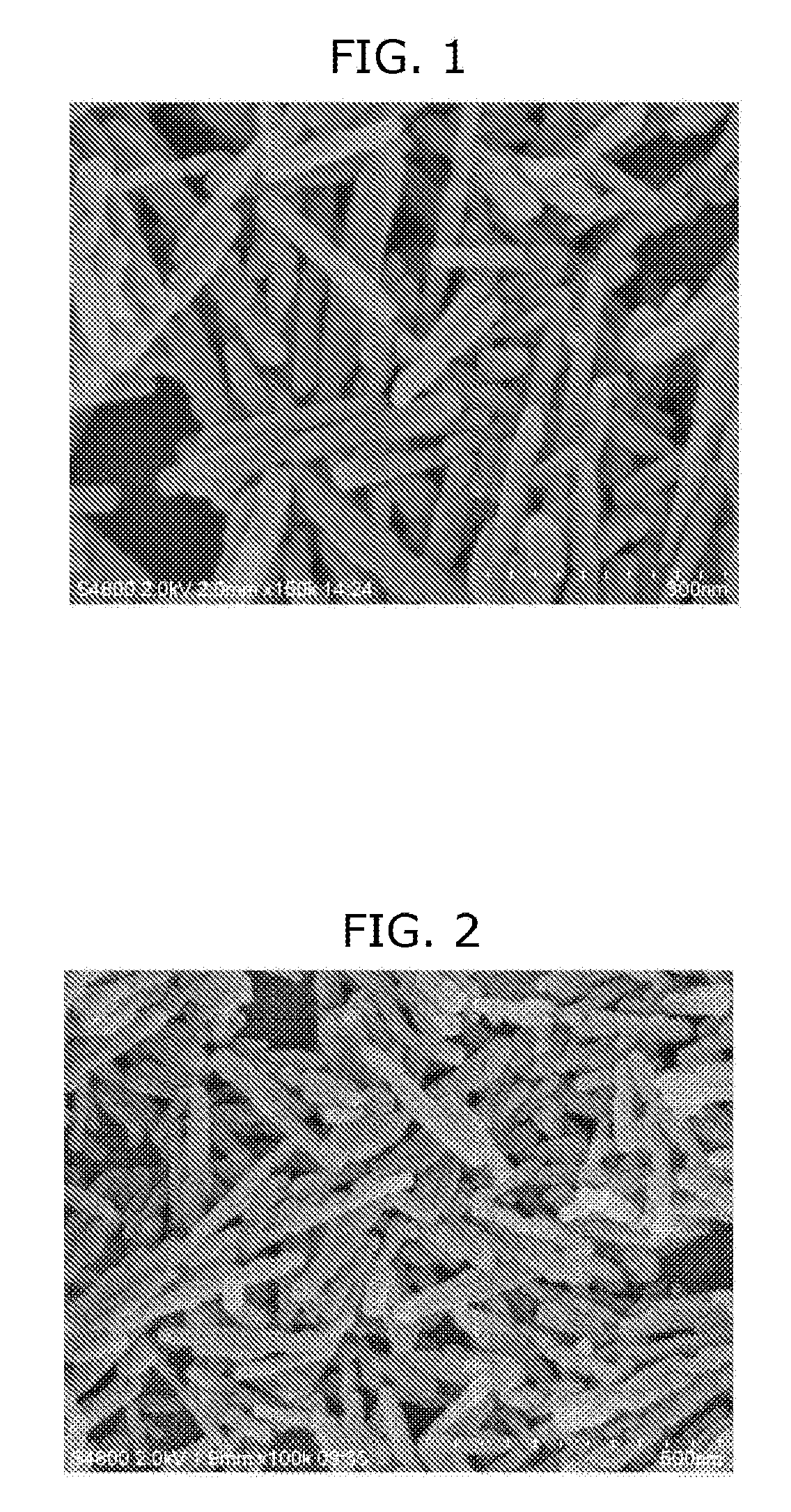Process for manufacturing needle-shaped strontium carbonate particles
a technology of strontium carbonate and manufacturing process, which is applied in the direction of strontium carbonate, calcium/strontium/barium carbonate, etc., can solve the problems of troublesome dispersal of employed alcohol and difficulty in dispersing stick-like particles per se in the polymer resin, and achieves high strength
- Summary
- Abstract
- Description
- Claims
- Application Information
AI Technical Summary
Benefits of technology
Problems solved by technology
Method used
Image
Examples
example 1
[0030]In 3 L of pure water (kept to 10° C.) was placed 366 g of strontium hydroxide octahydrates. The resulting mixture was stirred to give an aqueous strontium hydroxide suspension (concentration: 5.6 wt. %). To the aqueous suspension was added 17.2 g (10.3 weight parts per 100 weight parts of strontium hydroxide) of dimethylmalonic acid. The mixture was stirred until the dimethylmalonic acid was dissolved. Subsequently, gaseous carbon dioxide was introduced into the aqueous suspension kept at 10° C., at a flow rate of 3.75 L / min. (corresponding to a flow rate of 22.4 mL / min., per one gram of strontium hydroxide), under stirring, until the aqueous suspension reached pH 7, whereby producing an aqueous suspension of strontium carbonate particles. The stirring was further continued for 30 minutes. The thus manufactured aqueous suspension of strontium carbonate was dried to give powdery strontium carbonate.
[0031]FIG. 1 shows a SEM image of the resulting powdery strontium carbonate. The...
example 2
[0032]The procedures of Example 1 were repeated except for employing 8.5 g (5.1 weight parts per 100 weight parts of strontium hydroxide) of methylmaleic acid in place of dimethylmaleic acid and introducing gaseous carbon dioxide at a flow rate of 0.5 L / min. (corresponding to a flow rate of 3.0 mL / min., per one gram of strontium hydroxide), to manufacture powdery strontium carbonate.
[0033]FIG. 2 shows a SEM image of the resulting powdery strontium carbonate. The SEM image indicates that the powdery strontium carbonate is in the acicular form. Further, it was determined that the powdery strontium carbonate had a BET specific surface area of 56.0 m2 / g. Furthermore, it was determined that the powdery strontium carbonate had a length of 103 nm and a mean aspect ratio of 2.78 by measuring aspect ratios and lengths of 3,000 strontium carbonate particles on the SEM image.
PUM
| Property | Measurement | Unit |
|---|---|---|
| length | aaaaa | aaaaa |
| mean length | aaaaa | aaaaa |
| temperature | aaaaa | aaaaa |
Abstract
Description
Claims
Application Information
 Login to View More
Login to View More - R&D
- Intellectual Property
- Life Sciences
- Materials
- Tech Scout
- Unparalleled Data Quality
- Higher Quality Content
- 60% Fewer Hallucinations
Browse by: Latest US Patents, China's latest patents, Technical Efficacy Thesaurus, Application Domain, Technology Topic, Popular Technical Reports.
© 2025 PatSnap. All rights reserved.Legal|Privacy policy|Modern Slavery Act Transparency Statement|Sitemap|About US| Contact US: help@patsnap.com

